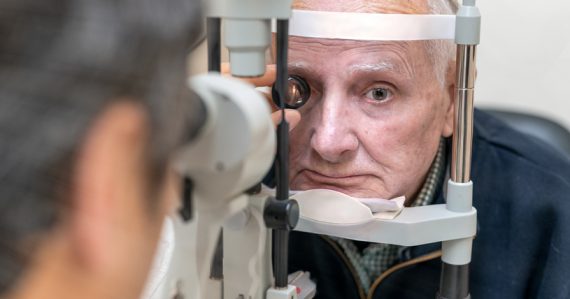People can have a cataract in one of both eyes. One of the questions we often get at Elmquist Eye Group is: do you have to have cataract surgery on both eyes? We typically perform surgery on one eye at a time. A few weeks later, after the first eye is well on its way to healing, we can then perform surgery on your other eye.
The Elmquist Approach
 Our approach of performing surgery on one eye at a time allows your first eye to recover and your vision to stabilize. Some surgeons do perform simultaneous surgery called bilateral cataract surgery, meaning they will perform surgery on both eyes at once. At Elmquist, we prefer to do one eye at a time. Cataract surgery is one of the safest and most effective surgeries you can have. Patients recover quickly, so you will easily be able to come in and have surgery on the other eye in a matter of weeks.
Our approach of performing surgery on one eye at a time allows your first eye to recover and your vision to stabilize. Some surgeons do perform simultaneous surgery called bilateral cataract surgery, meaning they will perform surgery on both eyes at once. At Elmquist, we prefer to do one eye at a time. Cataract surgery is one of the safest and most effective surgeries you can have. Patients recover quickly, so you will easily be able to come in and have surgery on the other eye in a matter of weeks.
During cataract surgery, we remove your affected lens and replace it with an intraocular lens (IOL). We can even implant an IOL with significant vision correction to correct significant refractive error. We prefer that our patients adjust to the new lens one eye at a time. Vision and depth perception both quickly adjust, and after the eye heals, we can perform cataract surgery on the other eye. We like to evaluate the visual outcome of the first surgery to see if it influences the corrective lens we use for the second surgery. For example, if we implant a multifocal lens in the first surgery, we need to determine whether to use the same lens or prescription strength in the second eye. Even though the risk of complications from cataract surgery is very low, we prefer to do one eye at a time in case you do have an eye infection or other complication.
All of our patients have a pre-operative consultation and thorough eye exam. The exam includes several detailed measurements that help us determine the best IOL lens type to use. During this time, the surgeon will discuss benefits and risks of the surgery and your expectations about the procedure. All of this helps us make the best choice for your unique eye care and vision needs. Our goal is to help you select the best implant for your long term visual needs.
Bladeless surgery
Elmquist Eye Group surgeons perform bladeless laser-assisted cataract surgery, a very precise, accurate and safe form of cataract surgery that was developed by Alcon. In fact, Alcon’s LenSx system was the first femtosecond laser system to receive FDA approval for cataract procedures.
The laser system automates three steps of cataract surgery that surgeons used to perform manually. The laser is used to make a circular incision that fragments the cataract. The surgeon can then more easily remove the cataract and damaged lens and replace it with the new IOL lens implant. We can even correct for astigmatism, a case of elongated curvature of the cornea.
Do you have to have cataract surgery on both eyes? No! We will do one eye at a time and we will provide you with detailed instructions following your procedure. When your first eye heals, we will do your second eye. IOL lenses are specially formulated to prevent cataract buildup, so you will have great long-term vision. You and your eyes are in good hands at Elmquist Eye Group. Give us a call today to schedule your surgery consultation.
